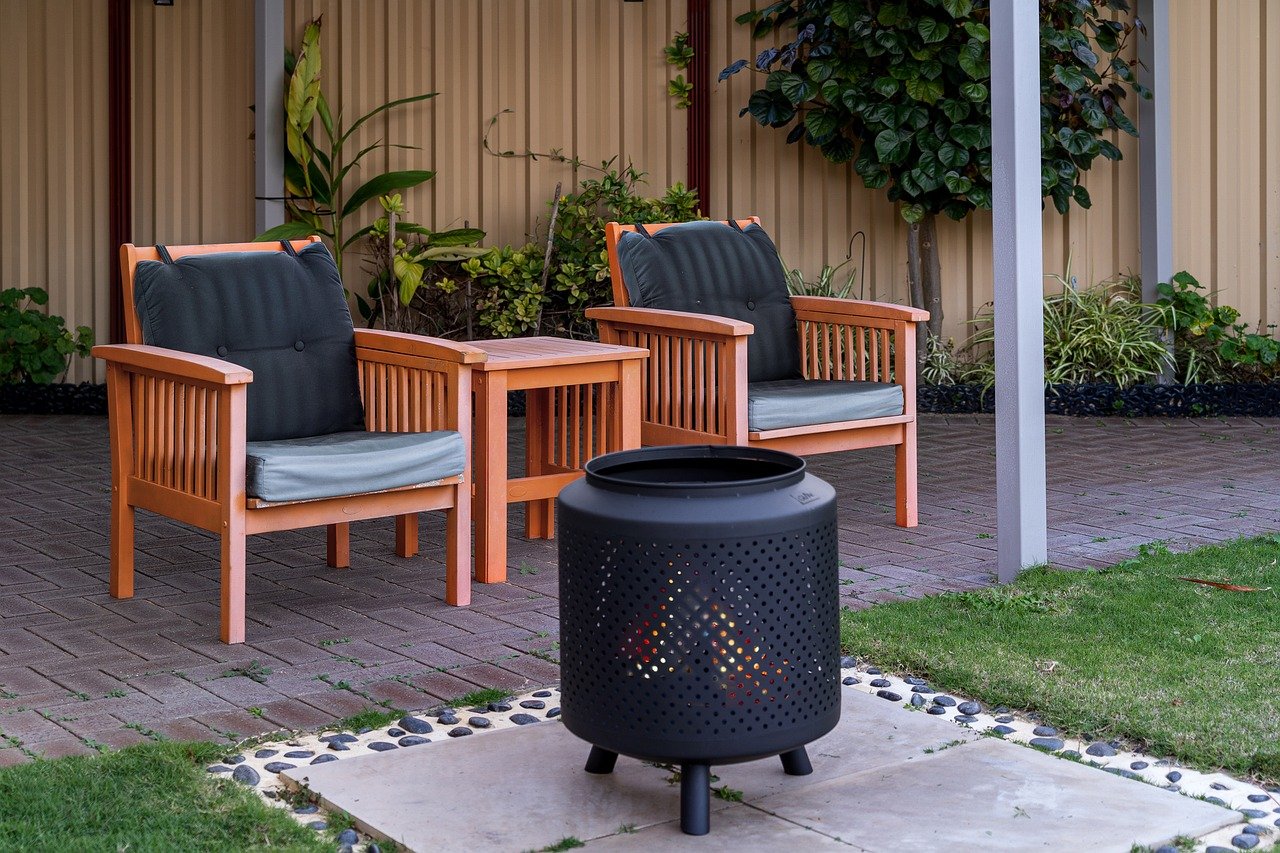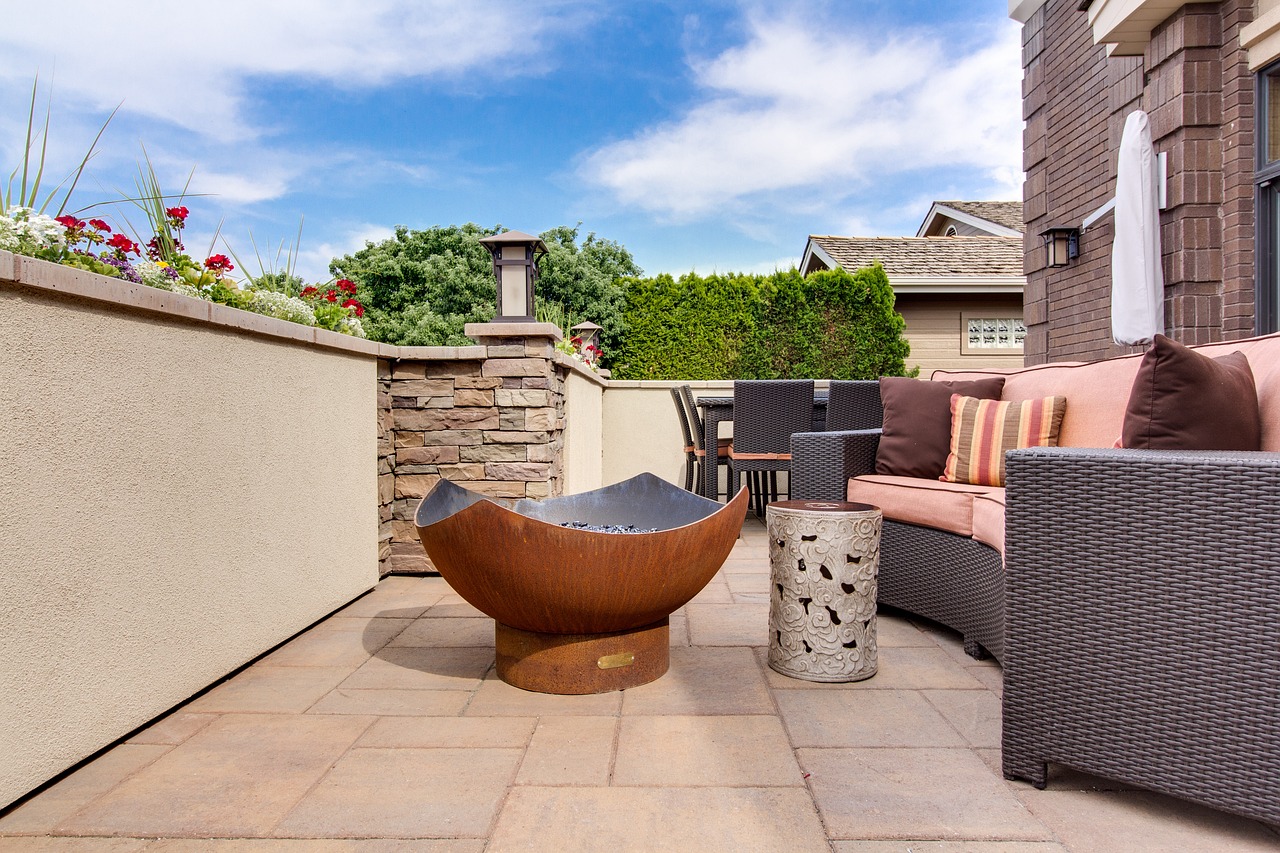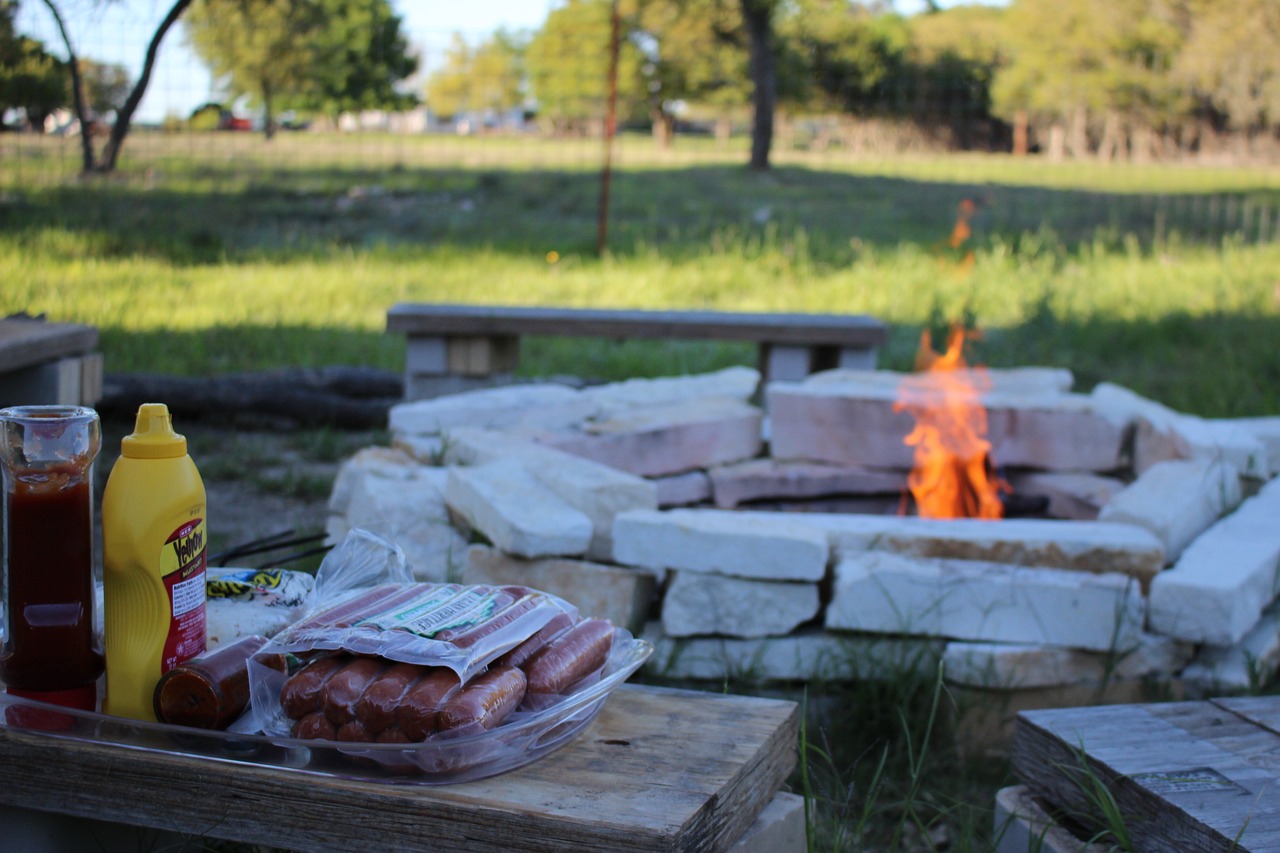Creating a backyard fire pit transforms your outdoor space into a cozy retreat perfect for year-round entertainment. Whether you’re roasting marshmallows with family or enjoying quiet evenings under the stars, a well-designed fire pit adds both value and charm to your property. Let’s explore the essential aspects of building a safe and attractive fire pit that will serve as the centerpiece of your outdoor gatherings.
Choosing the Right Location
The success of your fire pit project begins with selecting the perfect location. Strategic placement ensures both safety and optimal enjoyment of your outdoor feature.
Safe Distance from Structures
Fire safety should be your primary concern when positioning your fire pit. Consider these critical measurements:
| Structure Type | Minimum Safe Distance |
|---|---|
| House/Building | 15 feet |
| Trees/Branches | 20 feet |
| Wooden Fences | 10 feet |
| Wooden Decks | 15 feet |
| Property Line | 10 feet |
The area above your fire pit should be completely clear of branches, power lines, and any overhead obstacles for at least 20 feet. This clearance helps prevent accidental fires and ensures proper ventilation.
Ground Surface Considerations
The foundation of your fire pit is crucial for both safety and longevity. Your chosen location should be:
- Completely level to prevent structural issues and ensure even heat distribution
- Built on non-combustible materials such as gravel, concrete, or specially designed fire pit pads
- Well-drained to prevent water accumulation that could damage the structure
- Away from underground utilities (always call local utility services before digging)
- Positioned to minimize smoke impact on neighbors and your home
Selecting Materials for Your Fire Pit

The durability and safety of your fire pit depend heavily on material selection. High-quality, heat-resistant materials ensure your fire pit will withstand regular use and extreme temperatures.
Fire-Resistant Building Materials
| Material Type | Pros | Cons | Durability Rating |
|---|---|---|---|
| Brick | Excellent heat resistance, Classic look | Higher cost, Professional installation recommended | 9/10 |
| Natural Stone | Beautiful aesthetics, Weather-resistant | Expensive, Heavy | 9/10 |
| Metal Ring Insert | Affordable, Easy installation | May rust over time | 7/10 |
| Cast Concrete | Cost-effective, Customizable | Can crack with extreme heat | 6/10 |
When selecting materials, avoid common mistakes such as using:
- Regular concrete blocks (they can explode when heated)
- River rocks (may shatter due to trapped moisture)
- Sandstone or other soft stones (crack under high temperatures)
Incorporating a Steel Fire Ring
A steel fire ring insert provides several crucial benefits:
- Protects surrounding materials from direct heat exposure
- Extends the lifespan of your fire pit structure
- Creates a uniform, professional appearance
- Improves airflow for better fire management
- Makes cleaning and maintenance easier
Design Ideas for Aesthetic Appeal
Your fire pit should complement your landscape while reflecting your personal style. Consider these design elements to create a stunning outdoor focal point.
Artistic Fire Pit Designs
Modern fire pit designs incorporate various artistic elements:
- Geometric Patterns: Incorporate symmetrical layouts or unique shapes
- Mixed Materials: Combine stone and metal for contemporary appeal
- Built-in Lighting: Add LED strips or landscape lighting for ambiance
- Decorative Screens: Include protective screens with artistic patterns
- Color Coordination: Match materials to existing landscape features
Seating Arrangements
Create an inviting atmosphere with thoughtful seating design:
| Seating Type | Recommended Distance | Best For |
|---|---|---|
| Built-in Benches | 4-6 feet | Permanent installations |
| Adirondack Chairs | 3-4 feet | Casual gatherings |
| Stone Seating | 4-5 feet | Natural aesthetics |
| Portable Chairs | Variable | Flexibility |
Safety Measures During Use

Proper fire pit operation requires strict adherence to safety protocols to protect both people and property.
Fire Size Management
Maintain control of your fire by following these guidelines:
- Keep wood stack height below the pit’s halfway point
- Use properly seasoned firewood to minimize smoke
- Avoid burning pressure-treated wood or construction materials
- Monitor wind conditions before lighting
- Keep flames contained within the pit’s boundaries
Extinguishing the Fire Properly
Develop a systematic approach to fire safety:
-
Keep these safety tools readily available:
- Garden hose with spray nozzle
- Fire extinguisher (Class A rated)
- Metal bucket filled with sand
- Heat-resistant gloves
- Long-handled poker or tongs
-
Follow this shutdown procedure:
- Stop adding fuel 1 hour before intended shutdown
- Spread out remaining embers
- Douse thoroughly with water
- Stir ashes and add more water
- Confirm all embers are completely cold
Legal Considerations and Permits
Understanding and complying with local regulations ensures your fire pit project stays within legal boundaries.
Understanding Local Regulations
Common regulatory requirements include:
| Regulation Type | Typical Requirements |
|---|---|
| Size Limits | Maximum diameter of 3-4 feet |
| Fuel Types | Often restricted to clean, dry wood |
| Operating Hours | Usually limited to specific times |
| Seasonal Restrictions | May be prohibited during dry seasons |
| Distance Requirements | Must meet minimum spacing from structures |
Obtaining Necessary Permits
Follow these steps to ensure legal compliance:
- Contact local building department for permit requirements
-
Submit detailed plans including:
- Location diagram
- Construction materials list
- Dimensions and specifications
- Schedule required inspections
- Obtain written approval before beginning construction
- Keep permits and documentation accessible
By following these comprehensive guidelines, you’ll create a safe, attractive, and legally compliant fire pit that provides years of outdoor enjoyment. Remember to regularly inspect your fire pit for damage, maintain proper cleaning procedures, and always prioritize safety during use. With proper planning and execution, your backyard fire pit will become the perfect gathering spot for making lasting memories with family and friends.

